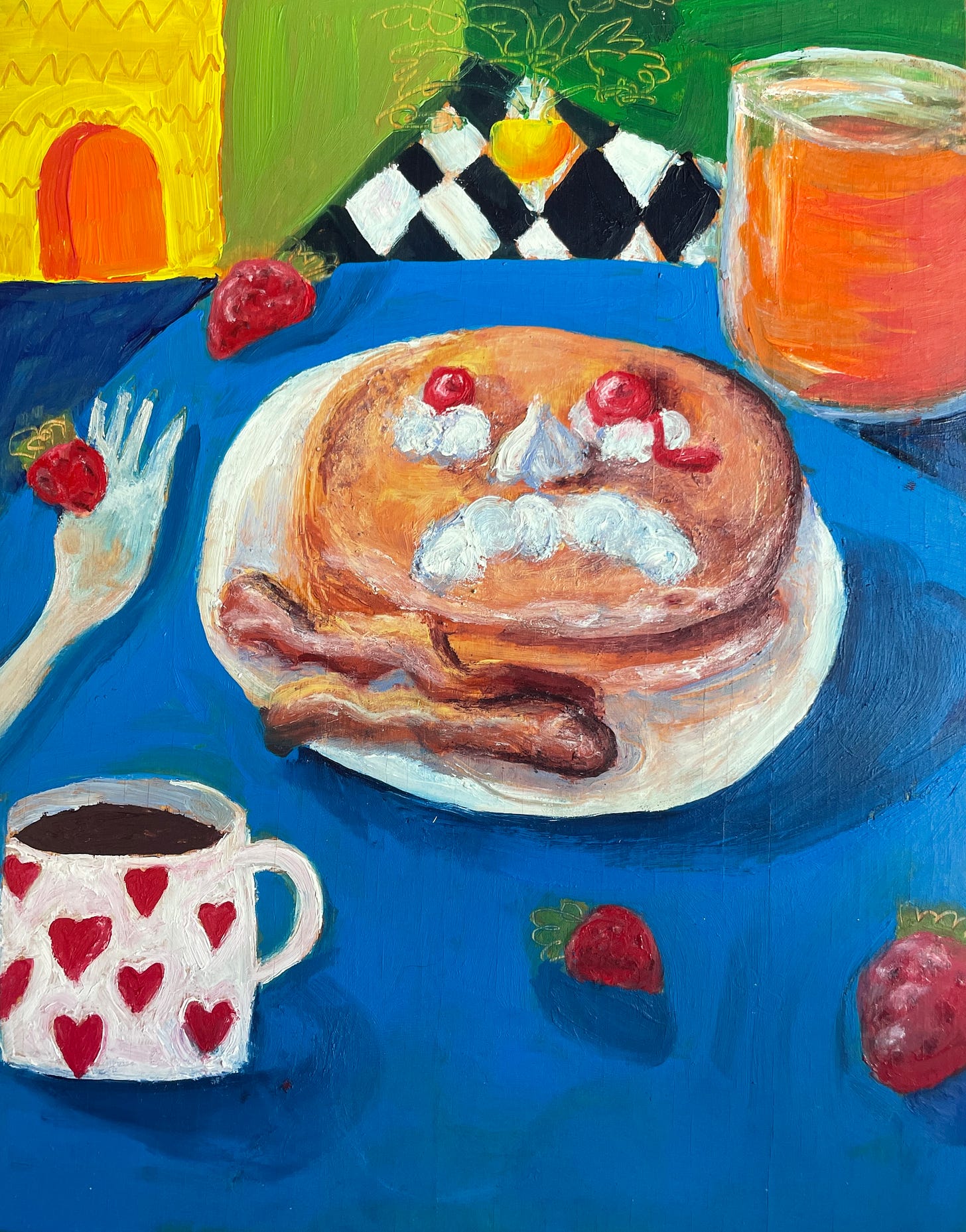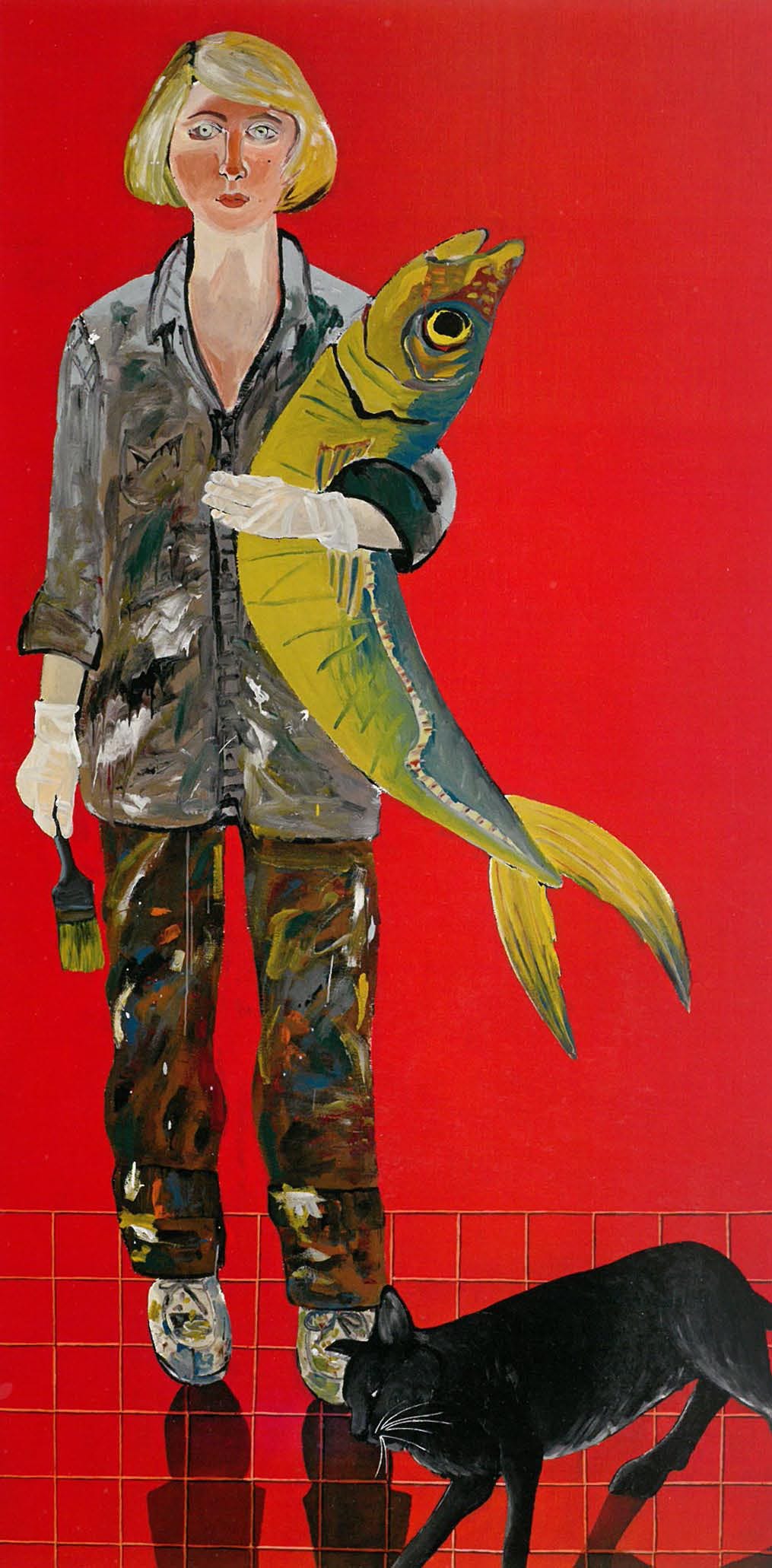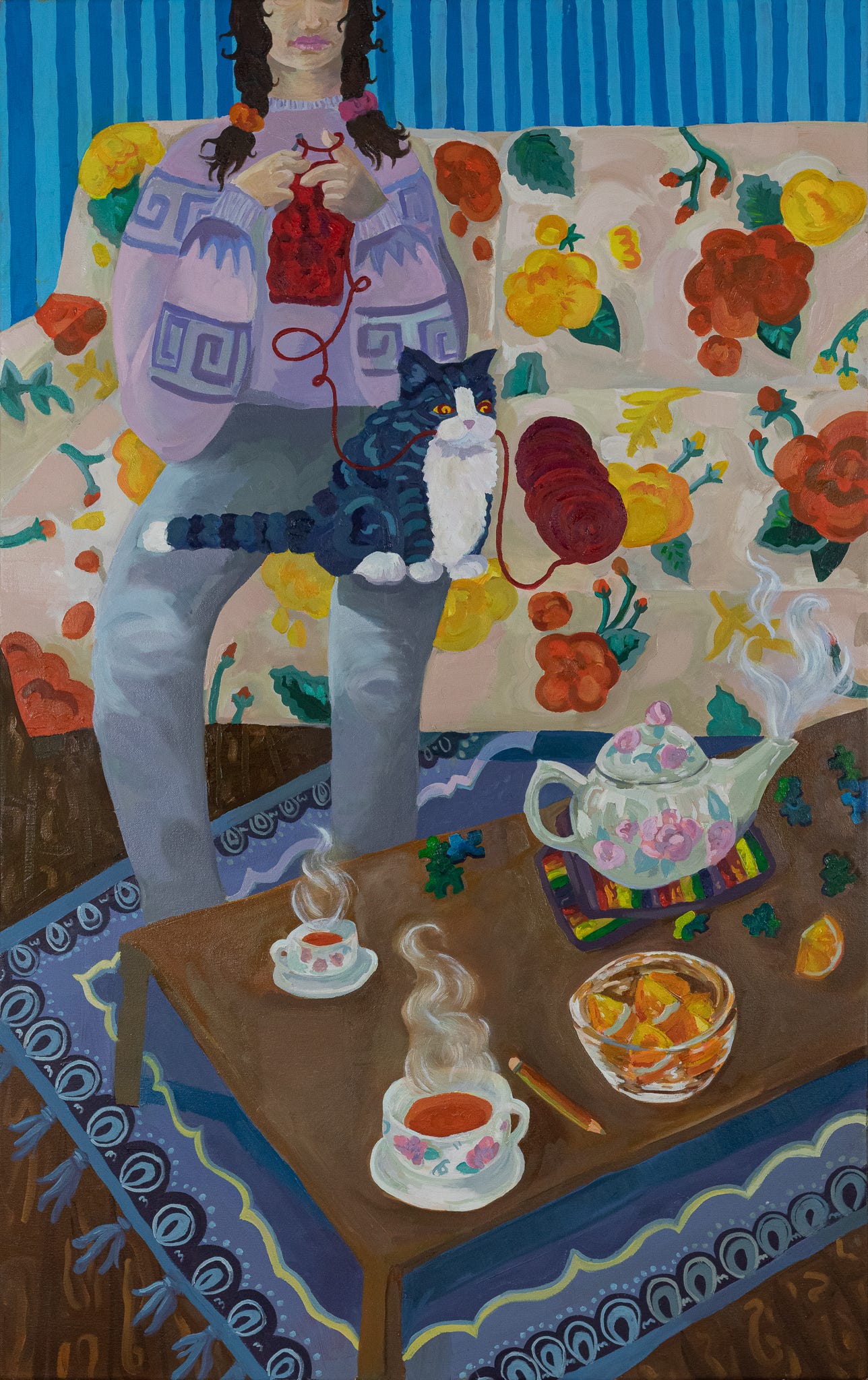The Art of Sincerity
Joan Brown: The Artist vs. Society and the Subversive Power of Authenticity
I am expected to do things a clever fellow could easily fake. But my consolation must be that I am much more handicapped by the sincerity of my intentions than by any lack of talent or ability. I have a feeling that sooner or later I shall arrive at something legitimate, only I must begin, not with hypothesis, but with specific instances, no matter how minute.
- Paul Klee
It is risky to reveal oneself, but as artists, we are compelled to do it. Our desires bite at our ankles, begging to be set loose in the wild, but we too often keep them on a tight leash. The true power of our art is inhibited through this restraint. This inner need to release our true nature is eternally in conflict with society’s mission to suppress it. Since the beginning of modern art as we know it, the production of art is co opted by collectors and elite art institutions, who control the art that is elevated, esteemed and sold. This tension is confounded by the arrival of social media, which relegates taste making not to any actual person, but an ambiguous and faceless algorithm that automates the taste making process for us. Artists today experience a sharp dissonance between their true selves and the art that they make to feed this beast. This is dangerous for artistic expression and severely limits its’ capability to effect change, drive connection, and foster self discovery in the artist themselves (you know, the very reasons we make art all?) Art making under these conditions renders the act meaningless. We are all aware of the problem, but what is the antidote? How do we liberate ourselves from the fog of irony we’re suffocating in? Can we be our true selves and find security in our art? The opposite of irony is sincerity. Sincerity is rarely seen in art and entertainment of today, which makes sincerity itself subversive in the time we are living in. In the malaise of modern life, sincerity cuts through like a sharp blade.
We are all aware of the double edged sword that social media has presented to artists; it has helped elevate some self taught artists to the spotlight who would otherwise not be known to us, and also, the algorithm selects these artists through arbitrary processes that do not consider the merit or intellectual value of a work of art. Virality hinges on an artwork's capacity to be quickly comprehended within the confines of a brief Instagram reel or post. This poses a threat to creative expression, as the most impactful art often derives its power from its specificity and uniqueness, deeply rooted in the artist's personal context and experiences. While a few of us may get the golden ticket, the rest are supressed. The art that is selected by the powers that be will more often be the art that reflects it’s own view points and values, rather than the art of truth telling.
When I introduced The Dollhouse Project to my small readership a few weeks ago, I knew my intentions for it were deeply sincere, but I also knew that I would be met with skepticism. To follow Paul Klee’s advice, I will move forward with specific instances and absolute sincerity: this project emerged out of my need to explore my personal experiences with homelessness and poverty. I have lived many years of my life in precarious circumstances and my humanity has been dragged through the dirt. Art is how I won it back. I write to you now from somewhere safe surrounded by comfortable furnishings, but I often struggle to make sense of how I found a soft landing while so many others outside lose fingers and limbs to frostbite in Chicago winters. Simultaneously, I have served as a case manager who slept between boxes in the storage rooms of a shelter in between shifts. Defining the goals of this project is challenging, as its path is still unfolding, but at its core, the dollhouse serves as a microcosm of the macrocosm. It questions societal assumptions about class, labor, visibility, and the potential of art to forge connections. This project is also what you interpret and contribute to it. I present the dollhouse as an opportunity for truth-telling, inviting you to share your stories and help shape this exploration of our collective societal landscape.
While I am largely pessimistic about the future of art, I sense that the elitist art world as we know it is shattering. Recently, two headlines flashed across my iPhone’s screen. The first headline announced a lawsuit levied against Damien Hirst for the misdating of one of his formaldehyde cow tank monstrosities to inflate it’s price-tag, the other was an article titled “Is is this the end?” referencing a sudden crash in the contemporary art market. These events symbolize a tipping point—indicative of a broader disillusionment and a questioning of value. Even collectors are no longer buying into the façade of the elite art world. The needle is moving in our favor. People want art that tells the truth.
This growing demand for genuine artistic expression recalls the legacy of Joan Brown, an artist who exemplified fierce, uninhibited sincerity. In the 1950s, as an emerging painter, she carved a niche for herself in the male-dominated world of Abstract Expressionism—a notable achievement for any woman at that time. Despite the lucrative career path that lay before her, with collectors eager to acquire her abstract works, Brown chose a direction truer to her own spirit.
Rather than concealing herself behind pretension, Brown chose to create art that narrated her own life directly and explicitly. She painted everything her dealer begged her not to: her family pets, her son in his halloween costume, nights out dancing with her partner, the rise and fall of her relationships. She used her art to explore her own spirituality and viewed her art outside of the traditional notions of value prescribed by the whole of society. Towards the end of her life, her art served as a vehicle to seek enlightenment. Poetically, she died an untimely death when she was impaled by a 13-foot obelisk dedicated to her guru in India. The obelisk that ended her life was inscribed with the words “truth, righteousness, nonviolence, peace, and love.”
Check out more of Joan Brown’s work here!
I discovered Joan Brown while taking a painting class at a local community arts center. After a few weeks of watching our work evolve, the instructor provided a customized list of artists to explore based on our personal subject matter and style. Joan Brown was at the top of my list. This was in 2022, as I was re-emerging into social settings after rigidly locking myself away during the pandemic. My painting, derived from a sketch from a craft night, depicted a simple domestic scene showing a figure crocheting, a cat, and a coffee table with an arrangement of tea, orange slices, and puzzle pieces. The composition was very simple, rendered in a naive application of paint. Joan Brown’s unapologetic embrace of the personal and the everyday granted me the freedom to capture life as I see it, celebrating the quiet, intimate moments that compose our lives.
While reading about Joan Brown, I discovered that she, too, grappled with insecurities about her work but found comfort in Henri Rousseau’s playful and imaginative canvases. Like Brown, Rousseau faced skepticism and mockery from elitist critics, yet both artists, despite the stifling atmosphere of the art scenes they navigated, are now fondly remembered in art history and have had their works acquired by museums. Sincerity cuts through like a knife. Though it may seem that focusing on quaint and simple scenes in our art might overlook life's complexities, creating personal narratives actually allows artists to express their authentic selves, deeply connect with audiences, and inspire fellow creators. This approach enriches cultural legacies and transforms both personal and communal artistic landscapes, proving that even the most ordinary moments can capture profound universal truths.
“The art of art, the glory of expression and the sunshine of the light of letters, is simplicity."
-Walt Whitman






I like what you say about sincerity in art being almost a radical act. To me, sincerity is closely linked to self-acceptance. And self-acceptance can be really hard to achieve. Which is why it’s so moving to encounter this sort of art (music, literature etc).
Omg Jeremy I LOVE your paintings!!!! Great post. Genuine authenticity is so rare today that it almost feels like a radical act. I'm grateful to have found a little corner of the internet that is so committed to art, authenticity, and thinking deeply about art. Cheers 💕